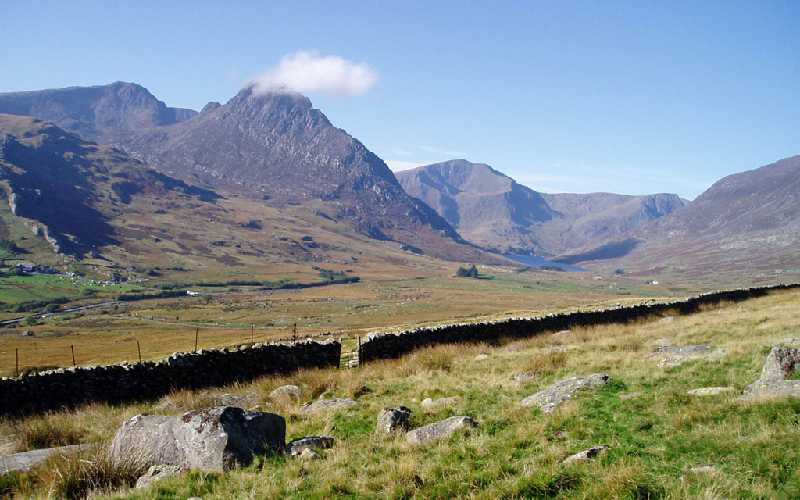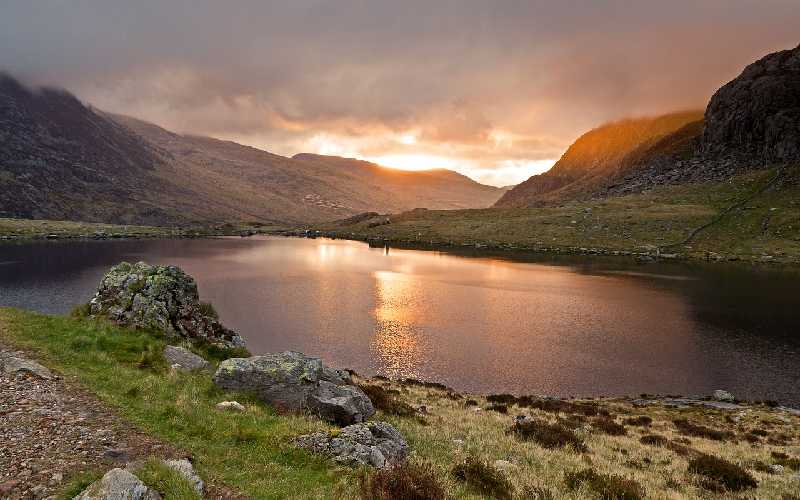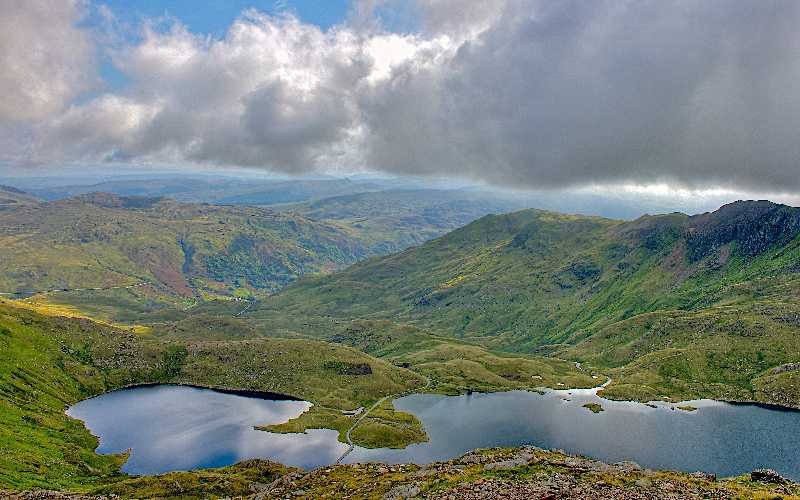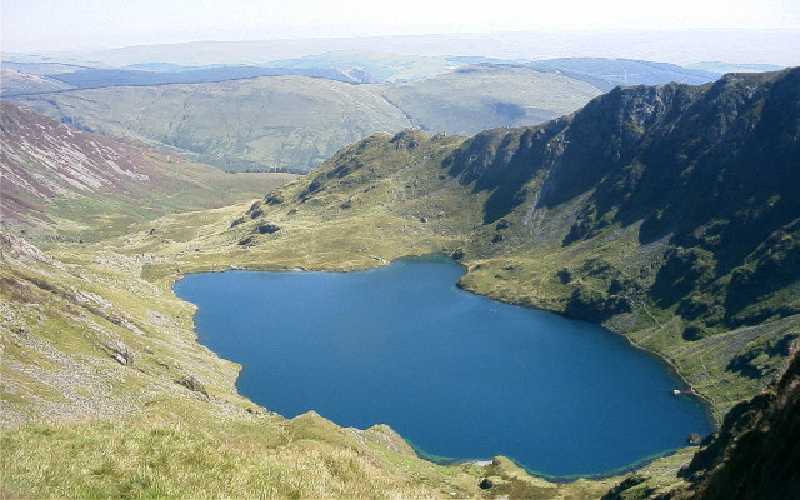Wales is a haven for hikers, but be prepared for ‘varying’ weather conditions! From Lake Iswal to Cadar Idris, today’s blog is all about the best walks in Snowdonia.
Glyderau or Blue Mountains

The Glyderau or ‘Blue Mountains’ are a group of hills in Snowdonia, North Wales. The name is derived from the Welsh word for blue – “glydyr” (plural: glyderau) – referring to the colour of the lichen that grows on their rocky tops. They consist mostly of Ordovician slate, sandstone and limestone rocks. The Glyderau are characterised by steep south-facing slopes which gradually rise from Llyn Cwellyn in the east to their highest point at Snowdon (Yr Wyddfa) at 1085m above sea level meaning that they enjoy a high altitude snow mantle in winter, particularly on the eastern flanks.
The range is approximately 10 km, by 25 km and covers an area of about 125 km². The Glyderau have a maximum altitude at their peak of 1085m above sea level, whilst the surrounding valleys are about 600m lower.
Lake Idwal

If you are looking for a scenic but easy 2 our hike then the loop around Lake Idwal is perfect. It’s one of the best walks in Snowdonia for those looking for a more relaxed and easy grade walk. The Lake Idwal trail is a 4.7km loop and you can follow this route on All Trails.
Llyn Llydaw

The Glyderau contain Snowdonia’s highest lake – Llyn Llydaw. The lake is located at the bottom of Cwm Bochlwyd and Llyn Ogwen to the south-west of Snowdon, below Yr Wyddfa. The Conwy Falls lie on the southern slopes of Pen yr Ole Wen, one of the Glyderau’s main peaks.
Main Summits in Snowdon
The main summits are Cadair Idris, Pen yr Ole Wen (the highest peak in Snowdonia at 1085m), Foel Grach, Y Lliwedd and Glyder Fawr. The Glyderau are usually climbed from Llanberis in the west. The summit of Snowdon can be reached by a steep ascent from Llanberis (this is the normal route up Snowdon) or by a longer but gentler route from Pen-y-Pass.
Cadair Idris

The high point of the Glyderau group is usually considered to be Cadair Idris at 893m, although the summit is sometimes referred to as Y Lliwedd (which means ‘the bare one’) which is another of the Glyderau’s main peaks. It’s by far one of the Best Walks in Snowdonia.
From this rising peak it seems that much of Snowdonia lies below you and as a result it attracts many hillwalkers who wish to climb all six peaks in a day. Cadair Idris is the only peak in Wales to have a Youth Hostel situated on its summit. The hostel was built during the period 1936–39 by the London and North Eastern Railway Company, who had taken over responsibility for accommodation from the railway company that built it.
The name means ‘Chair of Idris’, possibly after the giant Idris. Cadair means “chair” in Welsh and Idris was a giant of Celtic mythology said to have lived on the summit of the mountain. The Giant’s Chair, an ancient stone chair in trachyte, believed by some to have been used for eisteddfod ceremonies and as a place for Druids to worship, sits at the end of a stone row near the summit.
The Glyderau have been allocated Special Protection Area status by Natural England which will protect its fragile ecosystems and ensure that land management practices do not damage this important site. The area is protected by European directives which apply across EU member states (Council Directive 92/43). Since the UK is currently not a member then the directives are given legal protection through UK legislation. In Wales it is important to protect the region due its high winds and steep terrain which means that during winter, snow fall can be up to two meters in places. This has led to areas of upland habitat being designated as Sites of Special Scientific Interest (SSSI) such as Coedydd y Cilau.
The area also offers a range of landscape features from moorland peatlands to limestone pavements and lakes such as Llyn Alaw beneath the peak of Garnedd Uchaf. There is also a wealth of minerals contained within the rocks that form the mountains such as calcite, dolomite and aragonite which have formed in pre-historic times due to natural chemical reactions that have occurred over millions of years.
Wildlife in Snowdonia
The wildlife that frequents this national nature reserve is diverse, these can be seen in a range of habitats from moorland to woodland and lake margins. Its flora also include plants like mosses, liverworts and lichens which are indicators of high altitude and nutrient poor habitats.
The area also provides a range of habitats that are important for nature conservation and contain species that have been designated as either endangered, vulnerable or at risk of extinction on the IUCN Red List. The site is home to 21 species of butterfly; these include black hairstreaks which were found to be at high risk of extinction in 2014. Another species that is found on the Glyderau are nightjar, which were also under threat and have been protected by law since 1931.
Red kites are a protected species in Wales and can be found in the area feeding on rabbits, small rodents such as voles and young lambs.
If you enjoyed this article on the Best Walks in Snowdonia you might also be interested in:

2 thoughts on “Best Walks in Snowdonia”